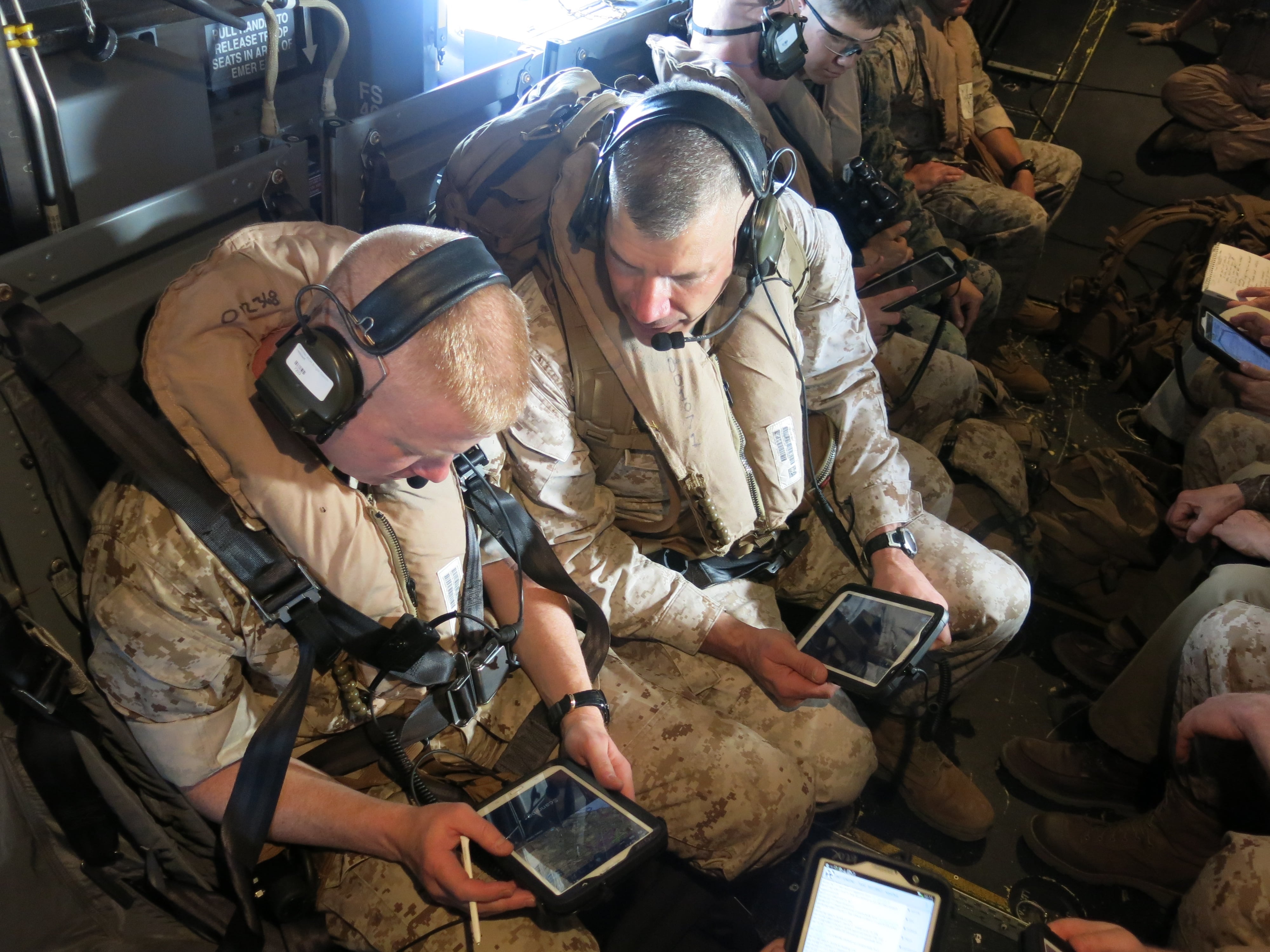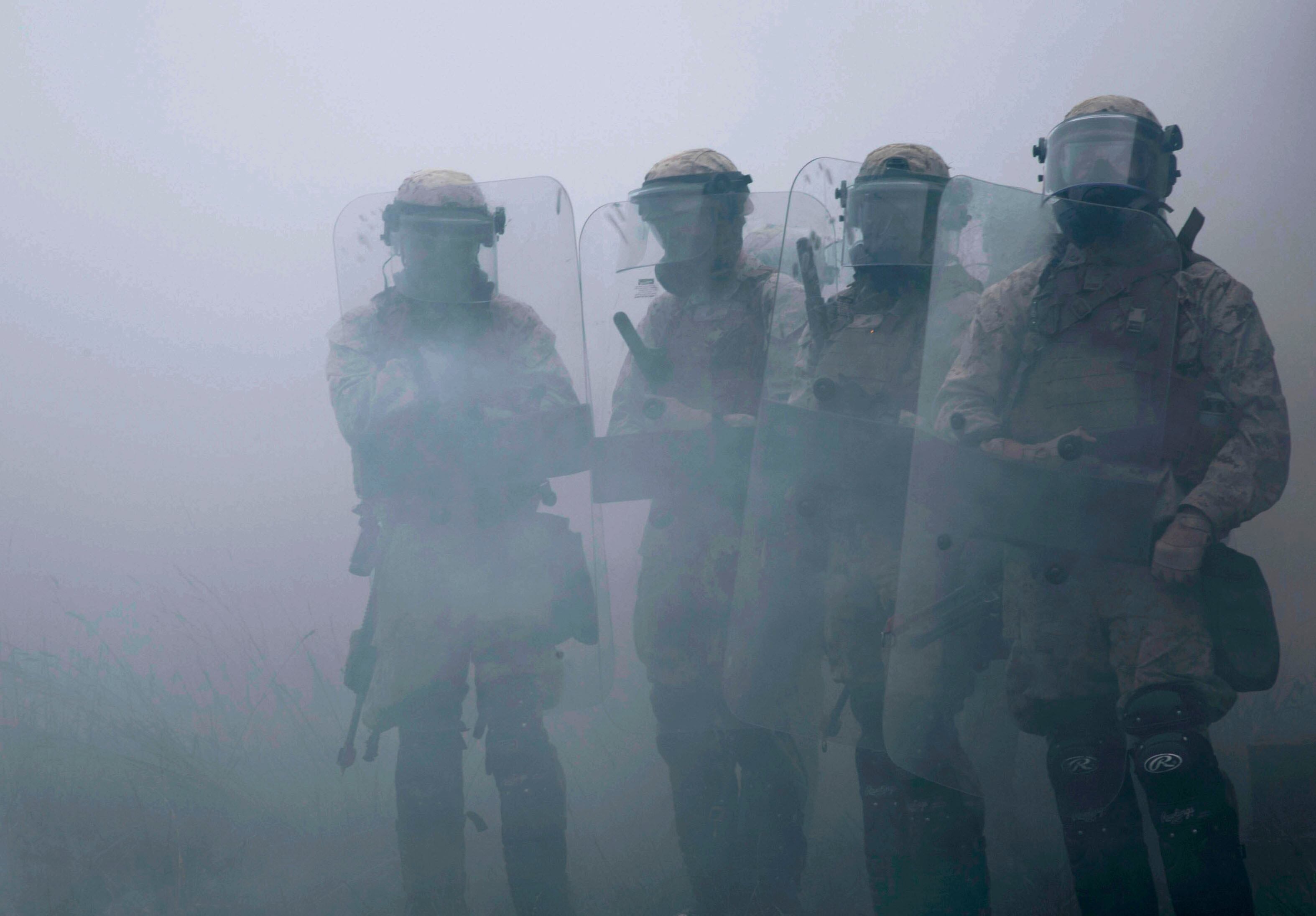MARINE CORPS BASE QUANTICO, Va. — Post-Afghanistan missions will likely be dispersed and unpredictable, creating a unique challenges for leaders who develop the gear Marines need to defeat the enemy. meet current, evolving and future threats.
Framing those efforts is Expeditionary Force 21, the Corps' 10-year road map that predicts Marines will be conducting carry out future engagements ranging from crisis response missions that could leave small teams of Marines deployed independently for weeks at a time, said to Marine Expeditionary Brigade and Force-level missions which will require Marines to operate independently down to the squad level over large areas of territory.led by members of by Marine Corps Combat Development Command here, at Marine Corps Base Quantico, Virginia, is Expeditionary Force 21, said Lt. Gen. Robert Walsh, who recently took the helm of Marine Corps Combat Development Command here. MCCDC and deputy commandant at Combat Development and Integration. The concept of operations unveiled in April 2014, predicts future engagements ranging from crisis response to Marine Expeditionary Brigade and Force-level missions which will require Marines to operate independently down to the squad level over large areas of territory.
Technology is what allows squads to operate independently over large swaths of land, he said, "Technology is what allows us to do that," Walsh said, giving radio communications in Afghanistan as an example.
"If those small units had not had the ability to call for fires, support and [medical evacuations],medivac we would not have put them out there," he said.
But for squads to operate that way over even greater distances, they will need better command and control and a whole host of new gear that officials with MCCDC, Combat Development and Integration CD&I and the Futures Directorate are all working to develop.
Further complicating that e mission to develop new gear are looming "hybrid" threats, which Walsh described as nation states employing conventional and non-conventional tactics on a single battlefield. That would mean Marines could face an Iraq-style insurgency and a well-funded conventional military at the same time, he said.
It's the sort of emerging threats seen in the Asia-Pacific region, Other emerging threats are seen in the Pacific where China is jockeying for influence, or in Europe where Russia is meddling. Similar threats exist in places like Iraq, Libya and Syria, along with other and in mega cities long littoral areas around the globe.
Gear for all those contingencies must be purchased and fielded procured carefully in this constrained budget environmentamid against the backdrop of shrinking federal budgets.
"There is not enough money going around," Walsh said. "It is a pretty austere time. Making sure we get it right and spend the money the right way so we can get the most combat capability is a real critical part of this." he said.
Here is a look at some top priorities for Walsh's command. MCCDC, CD&I and the Futures Directorate.
Near-term threats
The service is about to field is now fielding about 1,000 recently purchased PRC-117G Tactical Radios, with one going out to for every infantry squad. The radio, which can transmit and receive ultra and very high frequencies, UHF, VHF or link to a tactical satellite, was previously reserved for platoon commanders, said Brig. Gen. (sel.) Roger Turner, the director of the Capabilities Development Directorate.
Giving one to each squad means they can remain connected while spread out of as far as they need still be connected. The ose radios will begin hitting the fleet in about four months.
The radios could also be synchronized with to could be updated in the future and linkedto tablets and other smart devices to provide improve intelligence available to Marines on a long MV-22 Osprey flights into battle, for example.

Small squads of Marines operating independently over great distances will need better command and control and a host of new gear. Here, Marines in the Infantry Officer Course plan tactics and strategy aboard an MV-22 Osprey during a long-range raid in California.
Photo Credit: Lars Schwetje/Staff
A level above, Turner said tThe service is also trying now working to buy portable communications networks that fit on enough Humvees, called -borne "networks on the move," Turner said. which provide commanders at the battalion and regiment levels with a portable communications network without having to set up any infrastructure The system has been used by I Marine Expeditionary Force with great success, he said, so enough have been purchased to field across II and III MEFs by the end of 2017.
Eventually KC-130J Super Hercules and MV-22 Osprey aircraft could eventually receive the same system to provide command and control capabilities in transit.
The Marine Corps' services vehicle portfolio is also getting a face-lift. The anti-tank variant of the Light Armored Vehicle will receive a significant upgrade by set for completion in 2017. The vehicle will now have an advanced anti-tank TOW missile and targeting suite that allows on-the-move target identification on the move. The upgrade also fixes reliability issues with the weapon system, which sometimes could jams when it's raised ing up from the vehicle.
The service is in the process of upgrading its Amphibious Assault Vehicle with better, lighter, neutrally buoyant armor that doesn't affect how well it operates in water; blast mitigating seats; and other safety changes set for completion in 2019. The Corps also plans to soon field the The A Block 2 Ground/Task Oriented Radar, which is a towed radar system that can will now be able to determine the origin of hostile fire for counter-strikes.
Officials are also continuing work on and continued non-lethal weapons efforts, including that include a non-lethal mortar that can spray an area with a cluster of flash-bang-like devices to deny an area or disperse crowds especially in an urban setting.
Future contingencies
To meet future threats, Brig. Gen. Julian Alford is leading the charge to meet tomorrow's threats at the Futures Directorate. He envisions a future in which Marines could be called on to fight in chaotic, urban settings along coastlines with on the coast which could also have formidable defenses, including like missiles.
That could batteries that force ships to remain far out at sea and Marines to punch inland as shock troops.
"The Third 3rd World is moving to cities," Alford said. "The cities are on the coast line. People are going to run out of food, water and energy and then they are going to fight over it." Alford said, citing Marine Corps studies predicting the future security environment 15 to 30 years from now.
Marines will need the gear and doctrine to meet those threats, said Alford, who is working to update EF-21, which was rolled out as a working document.
In the urban littorals, Marines will be fighting on "four floors" he said, citing Marine Corps studies predicting the future security environment 15 to 30 years out from now. That means meaning Marines could they will be required to carry out complex missions — like evacuating friendly forces off rooftops — at the same time they're ,detaining targets a floor below, engaging in unbridled combat on a floor lower, all while another floor below, and pursuing insurgents irregular force through urban streets and tunnels.

Marines with Special-Purpose Marine Air-Ground Task Force Crisis Response-Africa, form a shield wall at the National Gendarmerie Training Center in St. Astier, France, June 19, 2015. The Marines trained to operate through dense smoke and riot-control gas while maintaining tightly organized formations. (U.S. Marine Corps photo by 1st Lt. Danielle Dixon/Released)
Photo Credit: 1st Lt. Danielle Dixon, U.S. Marine Corps Forces Europe
He envisions scenarios in which UASs survey a target area before F-35s strike shore-based threats, MV-22 Ospreys follow on with Marine shock troops and finally CH-53s swoop in with supplies and support. That updated EF-21 will be developed through comprehensive field testing with the entire Marine Air Ground Task Force.
But, whatever an updated EF-21 looks like, Marines will need the gear and systems to match though, he said.
Also vital on future battlefields will be tools that help Marines meet the "golden-hour" medical challenge. Marine Corps Special Operations Command has successfully deployed small vertical takeoff and landing unmanned aerial systems that can be used in congested urban settings that could deliver medical supplies to Marines.
What keeps Alford's up at night is ensuring young Marines who deploy have what they need for the mission at hand.
Marines don't say "no" when they're called to respond to a crisis, he said, and it's his job to make deploying troops have what they need.
"We have Marines out there in our MEUs and our special purpose MAGTFs, and in Okinawa for that matter that don't have the capabilities that they need to go 1,500 miles into a hostile city, for whatever reason to help American interests," Alford said. "And you know what is going to happen if that happens, we are going. We don't say no.
"What we do is we figure it out on the backs of unbelievable young Americans," Alford said. "...That is our job as senior leaders — to reduce that kid's risk of dying." Alford said.





